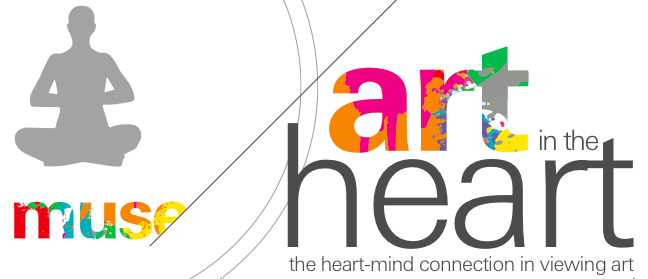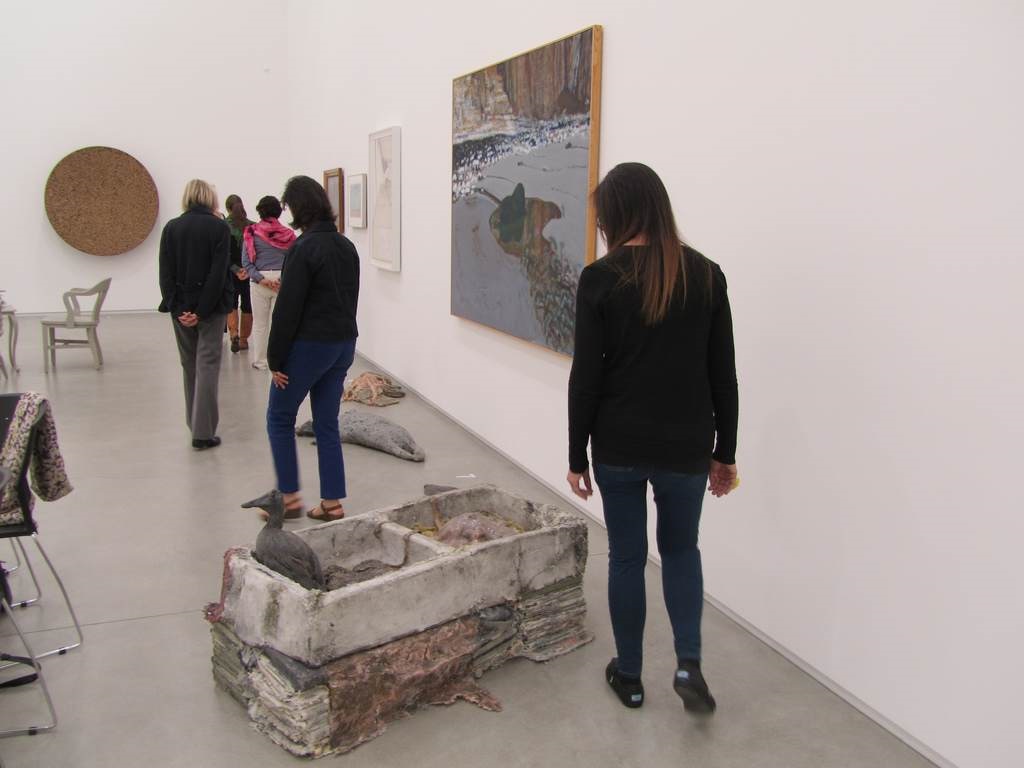Of the six trends we feature in TrendsWatch 2013, one that has generated the a lot of feedback so far is “Disconnecting to Reconnect”—our exploration of how people are going to great lengths to “unplug.” One of the people I connected with in the ensuring commentary is Clare Kunny, founding director of Art Muse Los Angeles (ALMA). In speaking of opportunities for museums to provide off-line experiences, Clare told me, “My question is: what aspects of mindfulness meditation can inform and enrich the museum experience and how do we apply them?” In this guest post, Clare shares a recent program she co-designed to help people disconnect from their mobile devices, and reconnect with art.
In recent years, there has been a tendency for museums to emphasize visitor engagement that can be experienced only through technology or social media, dis-connecting the visitor from a real-time experience. Some museum professionals, however, have pushed back against this trend, preferring to encourage people to reconnect with art and each other when they visit the museum. A recent CFM post by Andrea Michelbach discussed the importance of mindfulness meditation as a way for museum staff and visitors to reconnect. Not long before that, an article in the New York Times delved into the values and limits of mindfulness meditation in a fractured and information-overloaded world. These discussions caught my attention, because I was in the midst of final preparations for a 3-hour workshop on mindful art-viewing.
The workshop was the result of my years of working in art museums as an educator as well as a recent experience at the Hammer Museum in Los Angeles—a 75-minute contemplative art-viewing session. I was skeptical, but curious to learn, first-hand, whether mindfulness meditation could enhance art-viewing. I went away from the session convinced that mindfulness meditation has something to offer museums—particularly art museums. Iwondered what might happen if a longer session took place in a gallery setting. Could we dig deeper into the relevance of mindfulness to the museum context? Could I collaborate with a mindfulness educatorto bring two areas of expertise (art, meditation) into one program?
 The result of these musings was the experimental workshop “Art in the Heart: The Heart-Mind Connection in Viewing Art” that took place at ESMoAin El Segundo, California, on April 9. The workshop was developed in partnership with mindfulness educator Mitra Manesh, founding director of Rumi Rooms. Our goals for the workshop were to make attendees aware of the mindfulness meditation practice in the context of an art space and to provide them with a new approach to viewing and experiencing art.
The result of these musings was the experimental workshop “Art in the Heart: The Heart-Mind Connection in Viewing Art” that took place at ESMoAin El Segundo, California, on April 9. The workshop was developed in partnership with mindfulness educator Mitra Manesh, founding director of Rumi Rooms. Our goals for the workshop were to make attendees aware of the mindfulness meditation practice in the context of an art space and to provide them with a new approach to viewing and experiencing art.
 |
| Mindful Walking at ESMoA Workshop |
The workshop was hosted by ESMoA, a newly opened, non-profit art laboratory that proved an ideal setting. The inaugural exhibition in their 2,000 square foot space consists of paintings, sculpture, drawings, prints and photographs eccentrically installed in clusters without labels. On a day when ESMoA was closed to the public, we set up chairs in a semi-circle and, in the course of several hours, Mitra guided 10 participants—museum educators, docents and artists—through mindfulness meditation, mindful art viewing, walking meditation, and discussion. All attendees had some experience with meditation practices, and several in the group were acquainted with mindfulness meditation. Alice Cisternino,in a blog postfor Art Muse Los Angeles wrote about her experience in the workshop, observing that:
“Looking at art readily lends itself to this sustained consideration. Art is a visual language and words can offer entry points into its content but never completely define it. This mystery encourages the viewer’s search and reminds us that some of the most meaningful experiences cannot be articulated.”
Another participant noted the walking meditation was a reminder that walking is an essential activity while visiting a museum and makes you pay attention to your presence in the physical space shared with the art.
Although the workshop came near to meeting our goals we set, there is more work to be done. My partner, Mitra Manesh, and I intend to offer a series of 3-hour “Art in the Heart” workshops in the coming months to continue to explore how mindfulness meditation can be woven into the art viewing experience to enrich it. Furthermore, we’ll continue to explore what components of this meditation practice can be integrated into museum work through staff training, program development, and interpretation and presentation of art.

 The result of these musings was the experimental workshop “Art in the Heart: The Heart-Mind Connection in Viewing Art” that took place at ESMoAin El Segundo, California, on April 9. The workshop was developed in partnership with mindfulness educator Mitra Manesh, founding director of Rumi Rooms. Our goals for the workshop were to make attendees aware of the mindfulness meditation practice in the context of an art space and to provide them with a new approach to viewing and experiencing art.
The result of these musings was the experimental workshop “Art in the Heart: The Heart-Mind Connection in Viewing Art” that took place at ESMoAin El Segundo, California, on April 9. The workshop was developed in partnership with mindfulness educator Mitra Manesh, founding director of Rumi Rooms. Our goals for the workshop were to make attendees aware of the mindfulness meditation practice in the context of an art space and to provide them with a new approach to viewing and experiencing art.







I recently read Henri Nouwen's The Prodigal Son, an account of a three week mediation in front of that iconic work in the Hermitage.
Art is a window to another level of consciousness, and I'd like to learn more about your direction.
In addition mindfulness meditation was found to be beneficial for psoriases, epilepsy, fibromyalgia, and hypertension. This brief summary obviously demonstrates that mindfulness meditation can be effective for the body component of a human being. Lets explore the other two elements that make up human beings.
Ilchi Lee